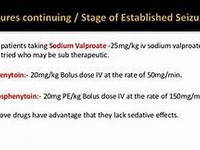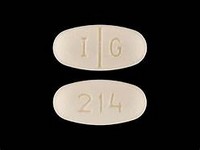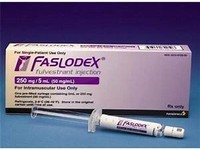hydroxycarbamide

hydroxycarbamide
CLINICAL USE
Antineoplastic agentDOSE IN NORMAL RENAL FUNCTION
15–40 mg/kg dailyConsult local protocolPHARMACOKINETICS
DOSE IN RENAL IMPAIRMENT
GFR (mL/MIN)
> 60 85% of normal dose and titrate to response45–60 80% of normal dose and titrate to response30–45 75% of normal dose and titrate to response10–30 50% of normal dose and titrate to response< 10 20% of normal dose and titrate to responseDOSE IN PATIENTS UNDERGOING RENAL REPLACEMENT THERAPIES
IMPORTANT DRUG INTERACTIONS
Potentially hazardous interactions with other drugsADMINISTRATION
Reconstition
–Route
OralRate of Administration
–Comments
–OTHER INFORMATION
Full blood count, renal and hepatic function should be monitored repeatedly during treatmentDosage should be based on the patient’s actual or ideal weight, whichever is lessHydroxyurea has been associated with impairment of renal tubular function and accompanied by elevation in serum uric acid, BUN, and creatinine levelsThe following formula can be used to determine the fraction of normal dose used for renally impaired patients: Fraction of normal dose = (normal dose) × {[f (kf – 1)] + 1}. f = fraction of the original dose excreted as active or toxic moiety (f = 0.35 for hydroxyurea); kf = patient’s creatinine clearance (mL/min) divided by 120 mL/minuteAdminister with caution to patients with marked renal dysfunction; such patients may rapidly develop visual and auditory hallucinations and significant haematologic toxicityAfter oral administration, hydroxyurea is readily absorbed from the GI tract and peak plasma concentrations are reached within 2 hrs. 50% is hepatically metabolised; 50% of a dose recovered in urine within 12 hours, mainly as intact drug; remainder excreted as carbon dioxide via the lungs or via the urine as urea
See how to identify renal failure stages according to GFR calculation
See how to diagnose irreversible renal disease
Home








